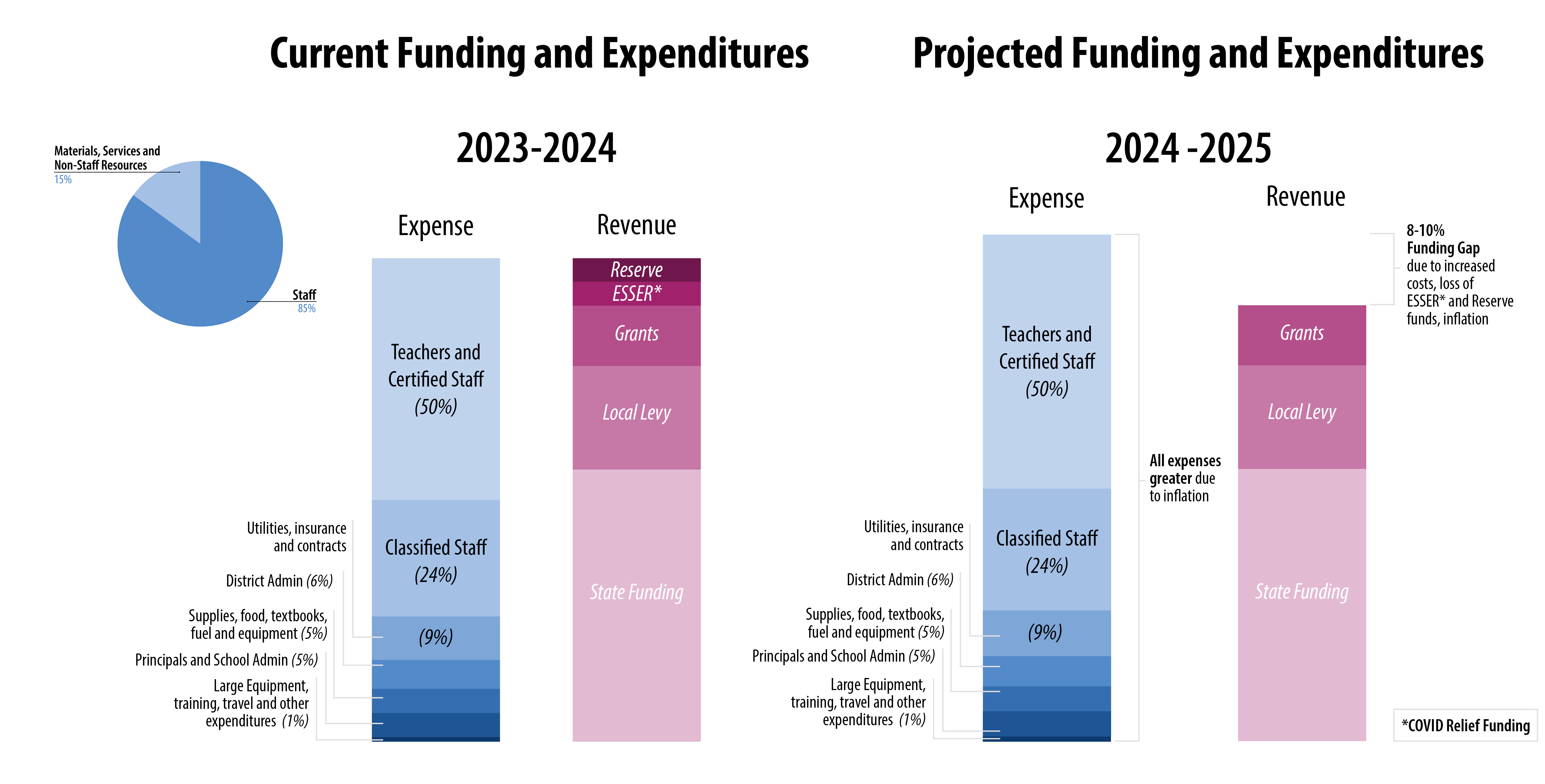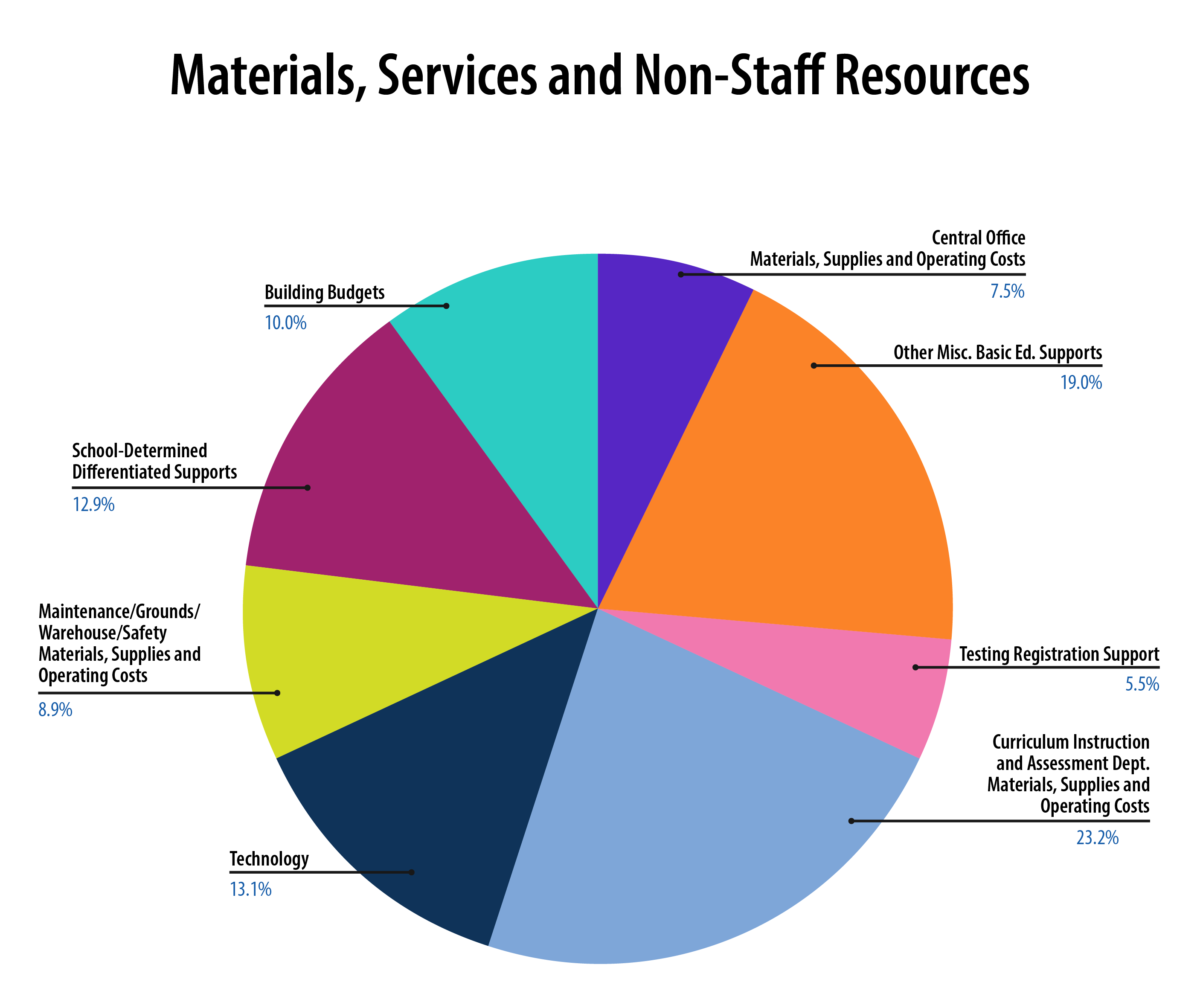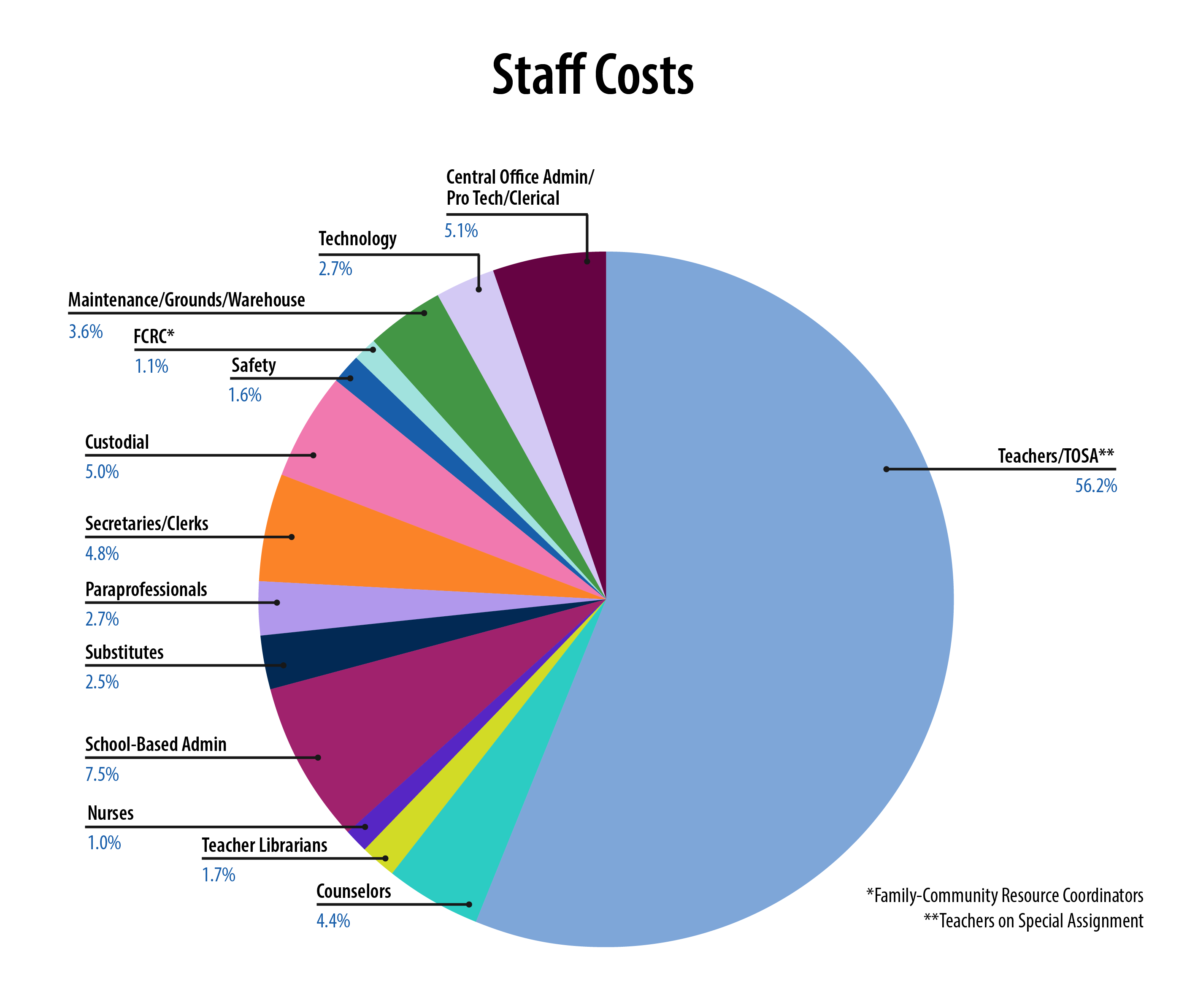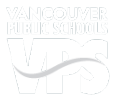Vancouver Public Schools
Our 2024-25 Budget Challenge
Balancing our 2024-25 budget
As we plan for next year’s budget, our school board has identified the need for an 8–10% budget reduction.
We want to make sure we provide you with relevant and timely information as we go through the budget adoption process. We will continue to have regular updates at board meetings, and will share information and answers to frequently asked questions here so our community is informed and part of this process as we make these very difficult decisions.
You can help us with this effort by sharing questions, concerns, and ideas. These will help inform our process moving forward. Thank you for being committed to the success of Vancouver Public School students.
2024-25 Reduction Plan Proposal
Why do we need to make budget reductions?
Some of our revenue sources we have used to bridge the gap between expenditure costs and revenue are going away.

Our budget details


Budget information shared at our staff meeting
We are sharing this video of the recent all staff meeting where Superintendent Snell discussed budget challenges with employees.
For privacy reasons, we have excluded the employee Q&A segment from the shared content. However, a summary of common questions and answers is provided below.
Learn more
Mar. 13, 2024 watch the Mar. 12 board meeting
Feb. 13, 2024 board meeting budget update (PDF) | Watch the budget update video
Jan. 9 budget information presentation
Nov. 14, 2023 board meeting budget update
Media articles
How States Are Rethinking Where School Funding Should Go, EducationWeek, February 2024

